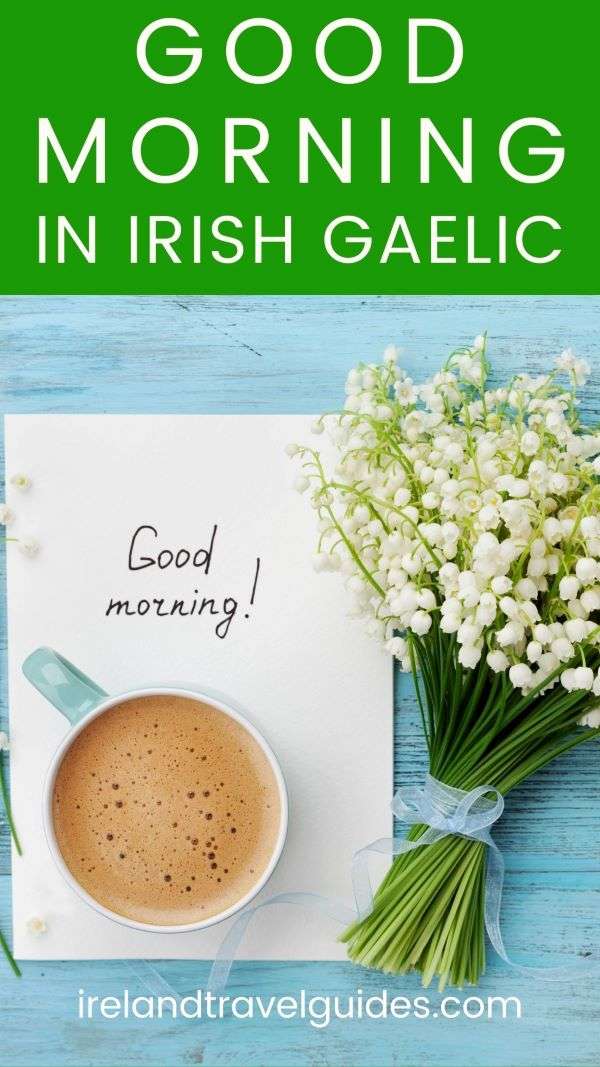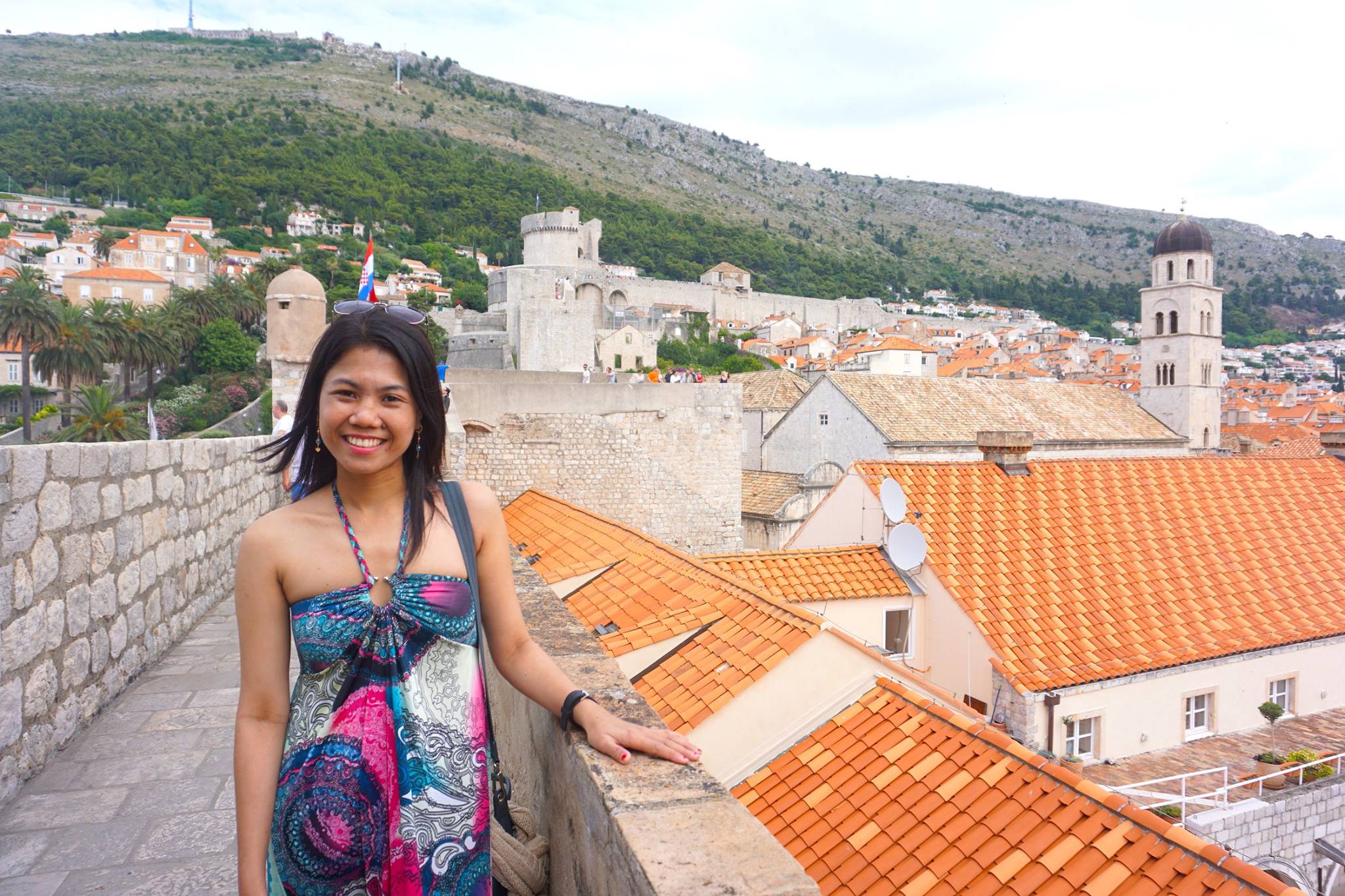Do you want to learn how to say good morning in Irish Gaelic?
How do Irish folks say “good morning?” No, it’s not “Top o’ the mornin to ya!” even in English-speaking cities.
It’s only a simple “good morning,” or a “hello,” “how are you?” or even “hiya.” They will not wish you the top of the morning, or any other part of it.
If you even say that foolish stereotype of a phrase, you’ll most certainly get a long-suffering sigh or an eyeroll.
The Irish language is maintained alive on the island of Inisheer, one of the vast Aran Islands off Ireland’s west coast, by the approximately 300 people who reside there.
School Children in Ireland do still learn Irish Gaelic, their resilient ancestors’ original dialect. Except in a few sections of the Emerald Isle, however, it is no longer commonly used in daily conversations.
Ways To Say Good Morning In Irish Gaelic

So, how about learning a couple of Irish greetings? Let’s begin with “Good morning.” While the pronunciation varies by county, everything is better than the “top o’ the mornin to ya!”
Here are a few ways to say good morning in Irish Gaelic.
1. Maidin mhaith!
The most basic way to say “good morning” in Irish is to say it like this. Maidin mhaith is a direct translation of the English greeting, where Mhaith means good and Maidin means morning.
In Irish, as in Spanish and French, the adjective comes after the noun.
The three main Irish dialects have different pronunciations for this phrase:
- In Connacht (Western Ireland), Maidin mhaith is pronounced as MA-jin wah.
- In Munster (Southern Ireland, particularly Clare, Kerry, and Cork) meanwhile, you will hear people say Maidin mhaith like MA-jin vah.
- Lastly in Ulster (Including the Irish Counties of Donegal, Monaghan, and Cavan, as well as the six counties of Northern Ireland), the way they pronounce Maidin mhaith is MA-jin why.
Purists, on the other hand, reject “maidin mhaith” since it is a direct translation from English, and so might be classified as “Béarlachas” — defined as an English phrase that doesn’t work in Irish.
Maidin mhaith is still commonly used in Ireland, especially in Donegal. It may have started out as Béarlachas, but it has since become accepted and understood in any Gaeltacht.
It’s also a good phrase to remember because it’s simple and you don’t have to worry about addressing one or more individuals, which is a problem with other greetings.
2. Dia dhaoibh ar maidin
This one is a little more formal and traditional) way to say “good morning” in Iris. This greeting definitely appeals to language purists because it’s also a traditional Irish idiom.
- Pronounced as JEE-uh g(w)itch air MA-jin, Dia dhuit ar maidin is how you say “Good morning” to one person.
- Meanwhile, Dia dhaoibh ar maidin (pronounced as JEE-uh YEE-uv air MA-jin is how you say “Good morning” to multiple people in Irish, in a slightly formal manner.
This phrase literally means “God to you this morning,” but it can also be translated as “Hello/Greetings to you this morning.”
Many Irish greetings have religious origins, but they are used by all Irish speakers, religious or not, in the same way that “Goodbye” (“God be with you”) and “Adios” (“with God”) are used in English and Spanish, respectively.
3. Móra na maidine duit
Pronounced as MOR-uh nuh MA-jin-uh ditch, this variation of “good morning” in Irish is said to be the origin of the stereotypical Irish greeting “top o’ the mornin to ya!”
- Móra na maidine duit is a way to say “Good morning” in Irish to one person.
- Móra na maidine daoibh ( pronounced as MOR-uh muh MA-jin-uh DEE-uv) meanwhile, is another way to say “Good morning” in Irish to multiple persons.
The “Stage Oirish” greeting is thought to have originated from a mistranslation of this (Móra na maidine) greeting. Mór, from which “móra” is derived – has several meanings.
These include “large” and “great.” It’s possible that this greeting was misinterpreted to mean “the better/greater half of the morning to you.” It most likely evolved and became “top” from there.
The móra in Móra na maidine, on the other hand, simply means “good.”

Hi, I’m Christine – a full-time traveler and career woman. Although I’m from the Philippines, my location independent career took me to over 60 countries for the past 12 years. I also lived in 4 continents – from the Caribbean, South East Asia, Africa and now in Europe. But despite living in several countries, my love for Ireland remains the same. A country that had been a part of my life since I was 14 because of my love for Irish music and bands. Ireland Travel Guides was born because of this passion and hopefully, in some little ways, this website will be able to help you on your next trip to Ireland.